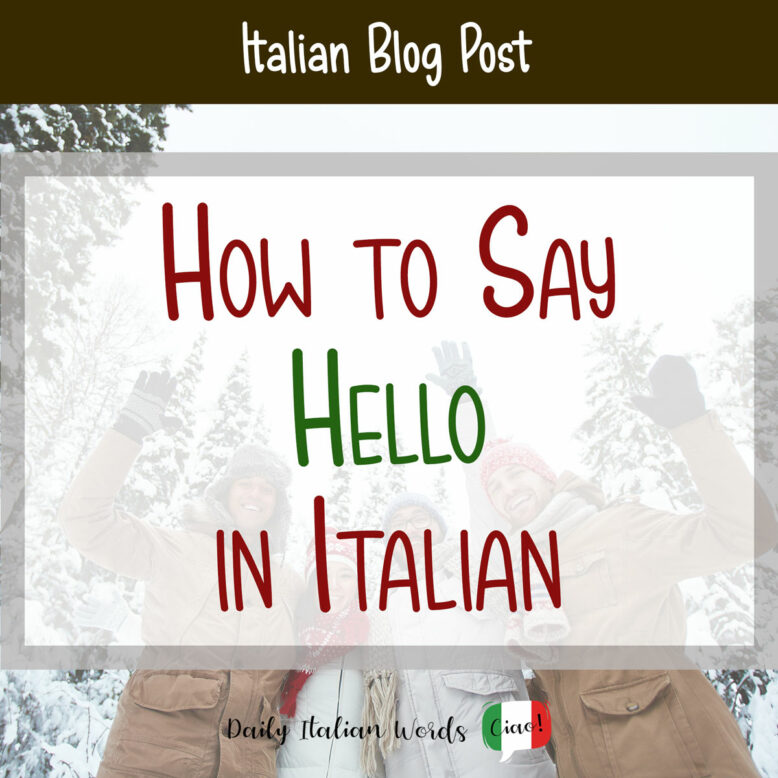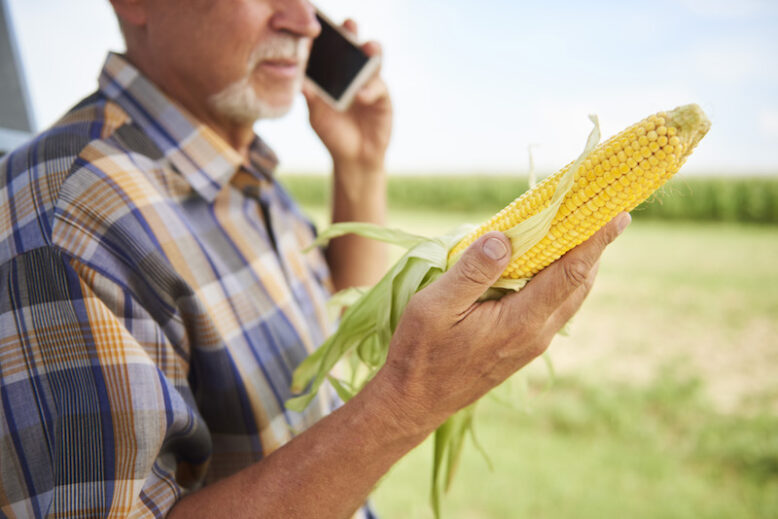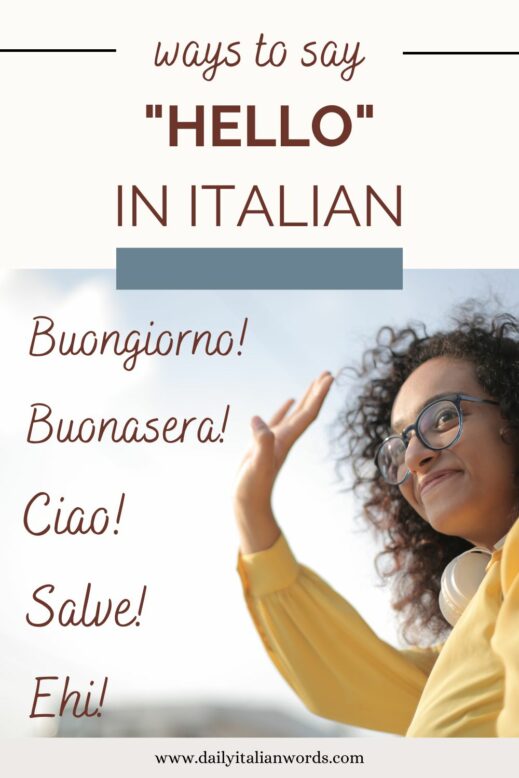First impressions matter. And first impressions often start at “hello”. How, then, do you say “hello” in Italian? In any language, there are many different ways to express the same idea. Some words or phrases imply friendliness and are perfect for a casual setting: “Hey, man, what’s happening?” On the other hand, some greetings are stiffer and imply formality, such as “Good morning, sir.”
While studying a foreign language, you may come across many different words or phrases that mean the same thing, but carry different connotations. Let’s analyse some of the most common ways to say “Hello” in Italian, starting with the most common: ciao.

Ciao
This word has become international. It’s popular and widely recognised no matter what language you speak primarily. But in its origin language of Italian, it is considered a basic, informal greeting. It carries the same connotations as the English greeting “hi”. It’s perfect for any casual encounter with a friend, or family member.
Fun fact: this phrase can also be used as “goodbye” – often repeated, as in “ciao ciao.“
Salve
If ciao is the typical informal greeting, then salve is the go-to greeting in most other settings. It is a lot like the English word “hello”: it’s a medium form of greeting that’s neither too stuffy nor too casual, and shouldn’t be used with those close to you. (You’d never hear someone greet their mom or best friend with salve, for example, unless they were joking around!) This greeting is better saved for strangers, your coworkers, or any higher power such as political office workers, policemen, or lawyers.
Buongiorno
Buon pomeriggio
Buonasera
In order, these phrases translate directly as “good morning”, “good afternoon”, and “good evening”. Depending on the time of day, you can use the correlating greeting, though to be honest, it is very rare to hear buon pomeriggio used as a spoken greeting. It is more frequently used as a form of formal goodbye.
If you haven’t check your watch recently and don’t know which timed greeting is more appropriate, you can always use buongiorno, which is also used generically like the English phrase “good day”. A sweet morning text to your significant other, a polite greeting for the cashier at the grocery store, and a warm word of welcome for any visiting friends. However, once the sun starts to set, buonasera should definitely be your go-to choice.
Fun fact: buongiorno and buonasera can also be used as farewell expressions. However, when used as farewells, they transform into buona giornata (have a good day) and buona serata (have a good evening) respectively.

Buondì
This phrase always reminds me of Australian accents pronouncing “Good day, mate” as “G’day, mate”. It sounds like a lazy shortening of buongiorno (good morning), but in reality is a lasting remnant of the old Latin word dì (for “morning”) combined with the Italian word for “good” (buon). It is an extremely casual way for greeting a close relative or friend in the morning.
Pro tip: This is not a phrase you see in most language-learning text books. It is lesser used amongst Italian speakers, probably because most regions of Italy consider this phrase to be extremely informal and will only use it with a select few people.
Pronto
Literally meaning “ready?”, this is the go-to phrase when answering a phone call. Before the days of caller ID, this was the perfect salutation when you weren’t exactly sure who you were greeting, and therefore if you should greet the person formally or informally. Nowadays, pronto is used more often with unknown numbers. If the caller ID says it’s your best friend, pronto isn’t necessary – simply move on to “Ciao, caro!”

Ehi
For an extremely informal greeting with your siblings or dearest friends, try ehi, meaning “hey“. Please note, however, that the phrase ehi also has all the same other means that “hey” has in English. For example, if I am trying to catch someone’s attention, I might call “hey” or ehi. In this situation, ehi might be confused with rudeness or haste when used incorrectly.
Ehilà
Ehilà takes its slang origins from ehi above, but with an added là, meaning “there”. In short, this casual greeting means “hey there“.
Weilà
This phrase is equivalent to ehilà in that it means “hey there“. The wei- is just a slightly different spelling and pronunciation of the adopted English word “hey”, with an added –là (there). It is very informal.

Benvenuto
Let’s finish off this list of basic greetings with a final word of welcome. Quite literally, benvenuto means “welcome”. It’s neither informal nor formal and is perfect to say to any person. However, it is not a substitute for “hello”. This is a welcoming greeting to be used when inviting someone inside.
Common Follow-up Phrases
Just saying “hello” doesn’t always cut it. Sometimes, a follow-up question is appropriate, especially when greeting a friend or family member. You may want to follow your ciao or buongiorno with one of these questions:
Come stai? / Come sta? – How are you?
Immediately following ciao or salve, this phrase shows the person you are speaking with that you care about them and their wellbeing. If you are speaking to someone younger than you or that you know quite well, you can use the informal word stai. If you are speaking to an elder, an authority figure, or someone you don’t know particularly well, use the more formal version sta.
Come va? – How’s it going?
This casual phrase can be used with anyone, older or younger than you. Because this phrase does not refer directly to the person you are speaking to, you do not need to worry if you should be using the informal tu or the formal Lei. This salutary question asks how someone’s day is going.
Written by our American contributor in Florence, Lyssa Yapp.

Heather Broster is a graduate with honours in linguistics from the University of Western Ontario. She is an aspiring polyglot, proficient in English and Italian, as well as Japanese, Welsh, and French to varying degrees of fluency. Originally from Toronto, Heather has resided in various countries, notably Italy for a period of six years. Her primary focus lies in the fields of language acquisition, education, and bilingual instruction.


